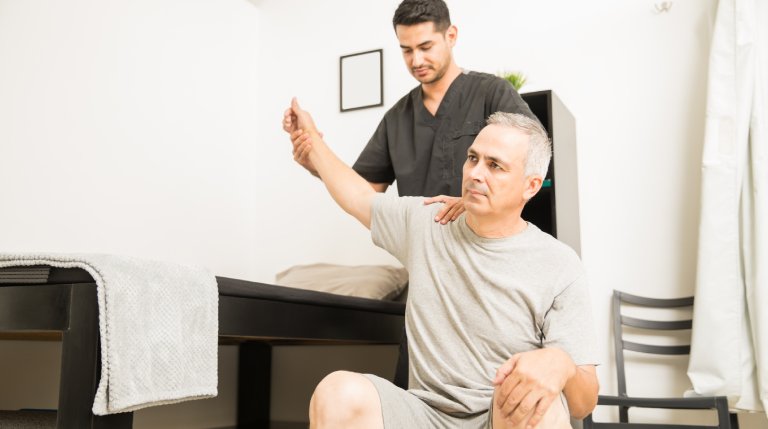
Anesthesia for the patient undergoing total knee replacement
ACL and knee replacement: Before we delve into decoding the significance of anaesthesia during knee surgery, let’s first understand what anaesthesia is.
Anesthesia is using medicines to prevent pain during surgery and other procedures. These medicines are called anaesthetics. They may be given by injection, inhalation, topical lotion, spray, eye drops, or skin patch. They cause a loss of feeling or awareness. There are mainly three types of Anesthesia utilised within various procedures, including ACL replacement.
- Local Anesthesia – Local anaesthesia numbs only the specific area being treated. The area is numbed with an injection, spray or ointment that lasts only a short period. Patients remain conscious (awake) during this type of anaesthesia.
- Regional Anaesthesia—Regional anaesthesia blocks the nerves in a specific body area without affecting the brain or breathing. Because you remain conscious (awake), you will be given sedatives to relax and put you in a light sleep.
- General Anesthesia is mainly used for primary operations such as joint replacement, knee replacement, or open heart surgeries. The effects of this Anesthesia are strong. It temporarily makes us unconscious, allowing the surgeons to operate on us while we do not experience anything.
ACL Sparing knee replacement: Anaesthesia can be used for many different types of procedures. They start with minor procedures like filing a tooth or significant surgery like a knee replacement. Especially in major surgeries, it becomes even more crucial that anaesthesia is given to patients before operations. Hence, their bodies become numb, and they don’t feel any pain, allowing for a smooth surgery.
Now, let’s understand the role of anaesthesia in knee replacement.
Total knee arthroplasty (TKA) has become one of the most common orthopaedic surgical procedures nationally. As the population and surgical techniques for TKAs have evolved, so have the anaesthesia and analgesia used. ACL tear knee replacement: General anaesthesia has been the dominant form of anaesthesia utilised for TKA in the past, but regional anaesthetic techniques are on the rise. Multiple studies have shown the potential for regional anaesthesia to improve patient outcomes, such as a decrease in intraoperative blood loss, length of stay, and patient mortality. Even in tier 2 cities like Gorakhpur, the knee surgeons in Gorakhpur will only proceed with significant surgery if they use Anesthesia.
Conclusion—It’s not just knee arthroscopy; surgeons will never advise proceeding without anaesthesia in any major surgery or procedure. The body is likely to experience a lot of pain during these surgeries, but anaesthesia numbs the body so it does not feel any pain, and the surgery can be performed smoothly, at YK Orthopaedics, the range of services and provisions, is geared to the entire life cycle of individuals undergoing orthopaedic health problems, and includes Ankle arthroscopy.




